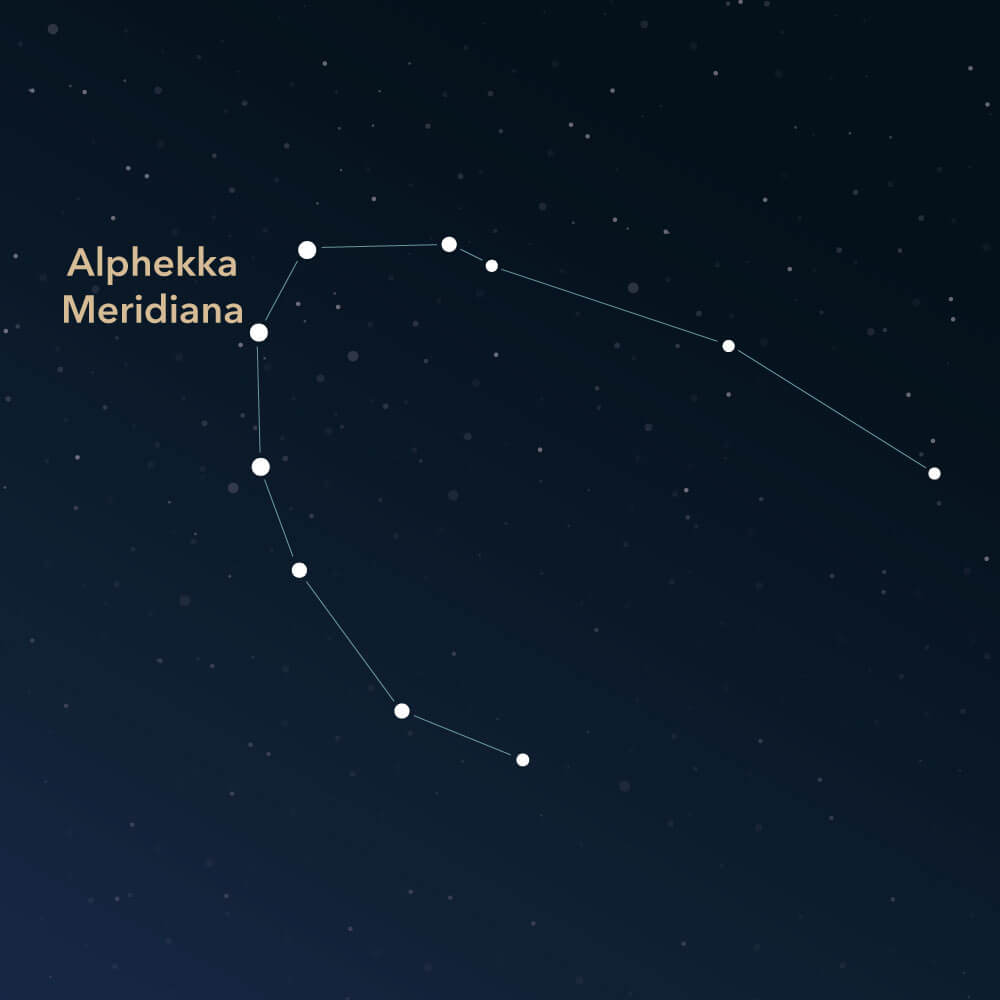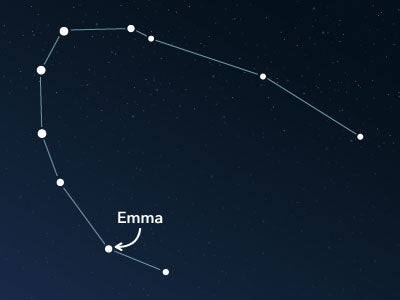The constellation Corona Australis
Caractéristiques
- Nom latin
- Corona Australis
- Hémisphère
- Hémisphère sud
- Visibilité
- May - August
- Région
- 128 deg²
- Étoile la plus brillante
- Alphekka Meridiana (HIP number 94114)
- Spécialités
- Globular cluster

The Corona Australis, also known as the Southern Crown, is a small, inconspicuous constellation in the southern sky and the counterpart to a constellation of almost the same name in the northern hemisphere. It is one of the 48 ancient constellations introduced by the Greco-Roman astronomer Claudius Ptolemy. There are very few deep-sky objects in this area of the sky.
Hemisphere, visibility, and area
The Corona Australis constellation lies in the southern celestial sky and can be observed from the entire southern hemisphere. North of the equator, it can only be fully seen in regions up to the 45th parallel, such as Venice in Italy or Portland and Minneapolis in the United States.
The best conditions for observing the constellation are from May to August. It has a small area of only about 128 square degrees, making it the 80th largest of all 88 constellations.
The Corona Australis is very inconspicuous due to its dim stars. The main stars are connected in visualizations to form an uneven semicircle. The star with the historical name Alphekka Meridiana (Latin: α Coronae Australis, Alpha Coronae Australis) is the brightest star, with an apparent magnitude of approximately 4.1 and a distance of around 125 light-years from earth. Its unique name comes from Arabic and means "the bright (star) of the broken (ring of stars)."
To find the Corona Australis in the night sky, it is helpful to orient oneself with the surrounding constellations. To the north, west, and east are the constellations of Sagittarius and Scorpius, which are particularly known in astrology. To the south lie the Ara and Telescopium constellations.
Specialties in the constellation
In the area of the Corona Australis are no objects visible to the naked eye. However, with the help of professional equipment, such as binoculars or a telescope, a beautiful globular cluster can be observed.
It bears the catalog number NGC 6541. It has an apparent magnitude of about 6.1 and is estimated to be about 22,000 light-years away. The Italian astronomer Niccolò Cacciatore discovered it in March 1826.
The object lies in the southeastern part of the constellation. In prism binoculars, it appears as a nebulous patch. However, a medium-sized telescope is needed to resolve it into individual stars.

Mythology
The Corona Australis was defined in Greek antiquity and is the counterpart to the constellation Corona Borealis (commonly known as Northern Crown).
According to legend, the Corona Australis is a representation of the laurel wreath of Crotus, a joyful son of the nymph Eupheme and the god Pan. He loved art and musical performances and always liked to surround himself with muses. They admired his performances, and in their enthusiasm, they laid a laurel wreath at his feet as a sign of honor.
After his death, they asked Zeus to immortalize Crotus in the heavens. So he became the constellation Sagittarius, and his laurel wreath was placed in the night sky as the Southern Crown.
PubliéLire d'autres articles intéressants

An overview of all 88 constellations
Learn more about all 88 constellations and read interesting information about the mythology, visibility, and features.

Application Planétarium
Découvrez le ciel nocturne avec notre application de planétarium !
Disponible pour iOS et Android.

Nommez une étoile dans la constellation Southern Crown
Name a star in a constellation and create something that lasts for eternity.